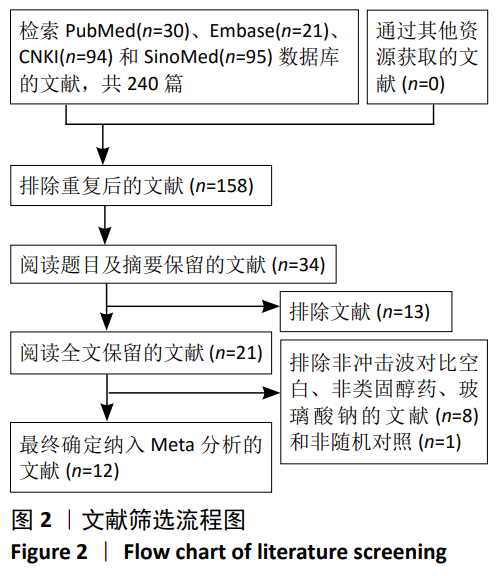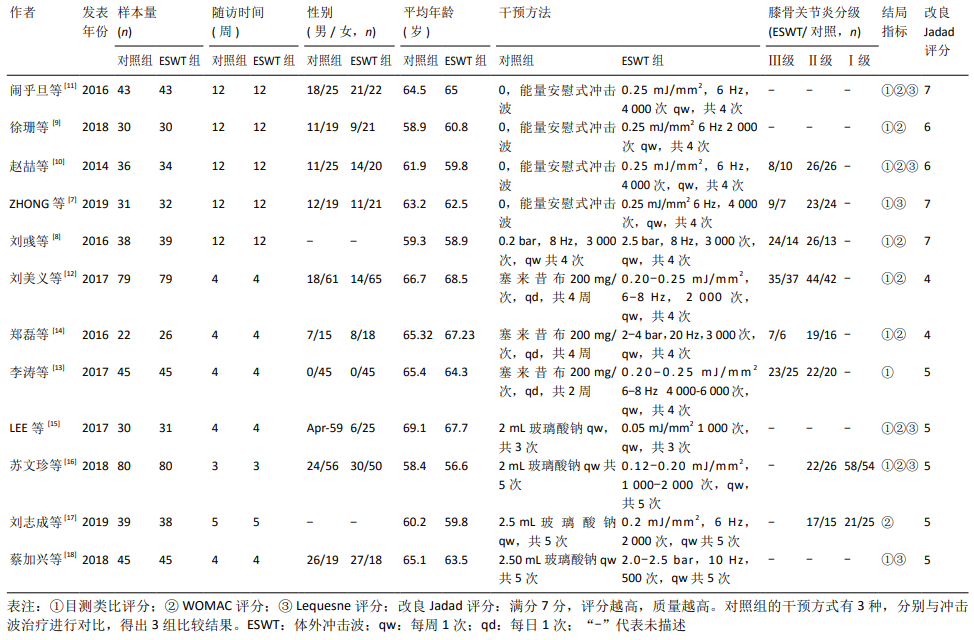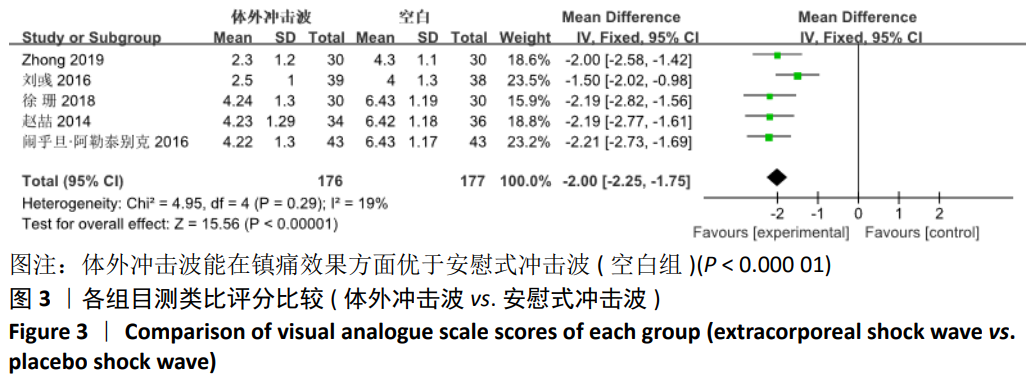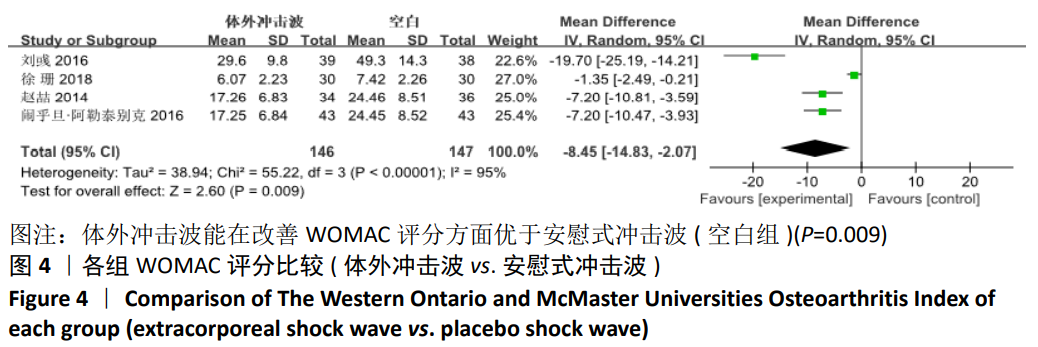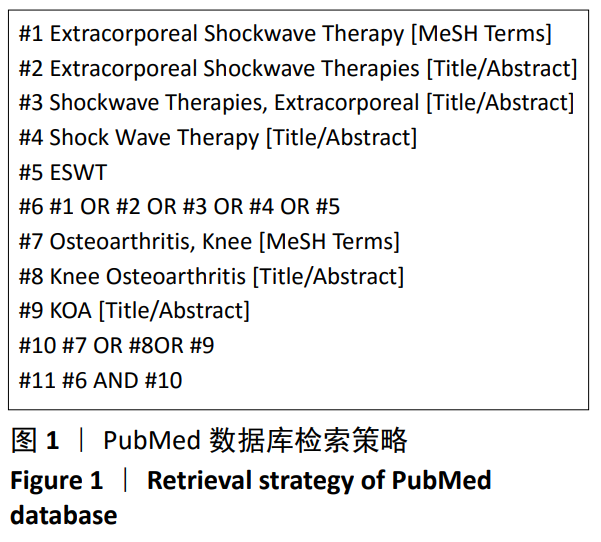中国组织工程研究 ›› 2021, Vol. 25 ›› Issue (9): 1471-1476.doi: 10.3969/j.issn.2095-4344.3767
• 骨与关节循证医学 evidence-based medicine of the bone and joint • 上一篇
体外冲击波疗法治疗中老年膝骨关节炎短期疗效对比的荟萃分析
黄登承1,王志科1,曹学伟2
- 1广州中医药大学第二临床医学院,广东省广州市 510000;2广东省中医院骨三科,广东省广州市 510000
Comparison of the short-term efficacy of extracorporeal shock wave therapy for middle-aged and elderly knee osteoarthritis: a meta-analysis
Huang Dengcheng1, Wang Zhike1, Cao Xuewei2
- 1Second Clinical Medical College of Guangzhou University of Chinese Medicine, Guangzhou 510000, Guangdong Province, China; 2Third Department of Orthopedics, Guangdong Hospital of Chinese Medicine, Guangzhou 510000, Guangdong Province, China
摘要:
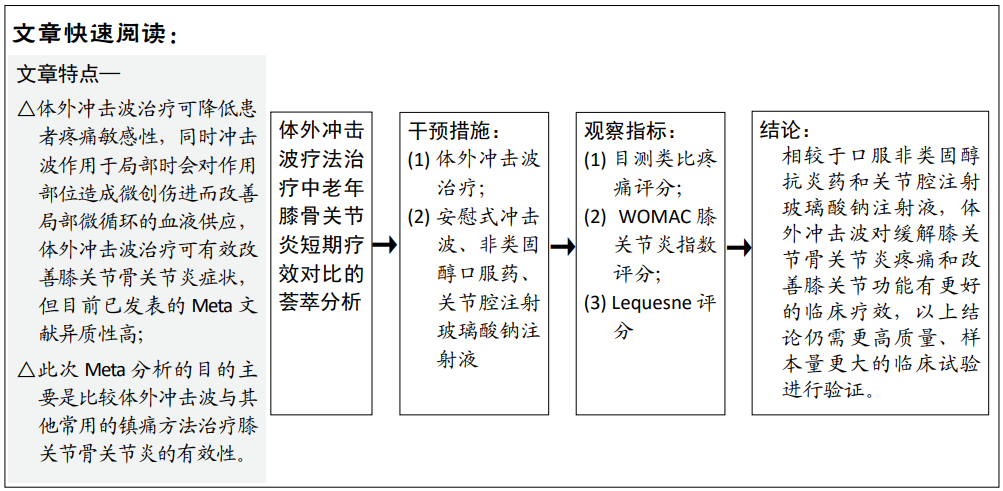
文题释义:
Meta分析的优势:高质量的临床研究对样本量和研究中心数量具有较高的要求,而随着样本量的增加,研究成本和消耗也会随之增加;Meta分析方法可以在一定程度上满足此类要求,在严格把握纳入标准的情况下,进行Meta分析也可以作出高质量的研究。
膝骨关节炎:是临床上常见的一种中老年退行性骨关节病,是致残的主要原因之一,从病理学和影像学上看,是一种以膝关节软骨退变并发骨质增生为特征的疾病。
目的:比较体外冲击波疗法与其他治疗方法对缓解中老年人膝关节骨关节炎疼痛和改善膝关节功能方面的疗效。
方法:计算机检索PubMed,Embase,CNKI和SinoMed数据库中体外冲击波分别与安慰式冲击波、非类固醇药及玻璃酸钠治疗膝关节骨关节炎的疗效比较,检索时限为建库至2020年3月,同时查阅所获取的参考文献索引。由2名研究者对检索收集到的文献按照制定的纳入和排除标准进行独立筛选。采用目测类比评分和西大略湖和麦克马斯特关节炎指数作为主要结局指标,Lequensne评分作为次要结局指标。使用Cochrane协助网推荐的偏倚风险评估工具评价文献质量,采用RevMan 5.3软件进行Meta分析。
结果:①最终纳入12篇文献,均为随机对照试验,共1 040例患者;②Meta分析结果显示:与空白对照比较,体外冲击波治可缓解膝关节骨关节炎患者的疼痛评分(MD=-2.00,95%CI:-2.25至-1.75,P < 0.000 01),改善西大略湖和麦克马斯特关节炎指数评分(MD=-8.45,95%CI: -14.83至-2.07,P=0.009)及Lequesne评分(MD=-2.39,95%CI:-4.24至-0.54,P=0.01);③与口服非类固醇止痛药对照时,在缓解患者疼痛方面,体外冲击波与非类固醇药无显著差异(MD=0.01,95%CI:-0.48-0.51,P=0.95),但体外冲击波治疗改善患者的膝关节功能效果更佳(MD=-6.56,95%CI:-8.24至-4.87,P < 0.000 01);④与单纯关节腔注射玻璃酸钠对照,体外冲击波同样可以改善膝关节疼痛(MD=0.22,95%CI:0.18-0.25,P < 0.000 01)和西大略湖和麦克马斯特关节炎指数评分(MD=-1.29,95%CI:-3.61至-0.74,P=0.003);⑤在Lequesne评分方面,体外冲击波与关节腔注射玻璃酸钠的疗效差异无显著性意义(MD=-0.21,95%CI:-1.09-0.67,P=0.64)。
结论:相较于口服非类固醇抗炎药和玻璃酸钠注射液,体外冲击波对缓解膝关节骨关节炎疼痛和改善膝关节功能有更好的临床疗效,但以上结论仍需更高质量、样本量更大的临床试验结果来验证。
https://orcid.org/0000-0001-5871-9083 (黄登承)
中国组织工程研究杂志出版内容重点:人工关节;骨植入物;脊柱;骨折;内固定;数字化骨科;组织工程
中图分类号:
